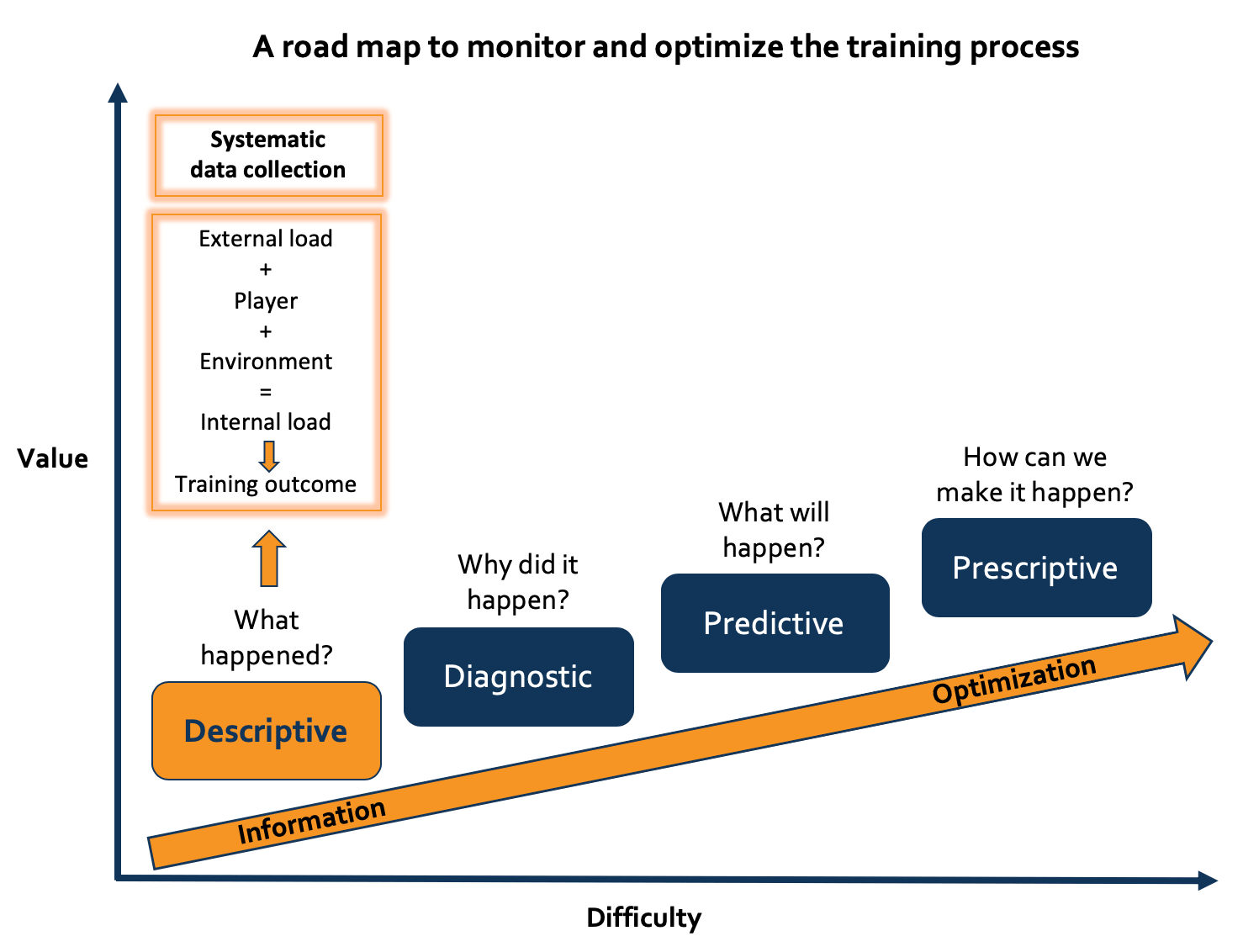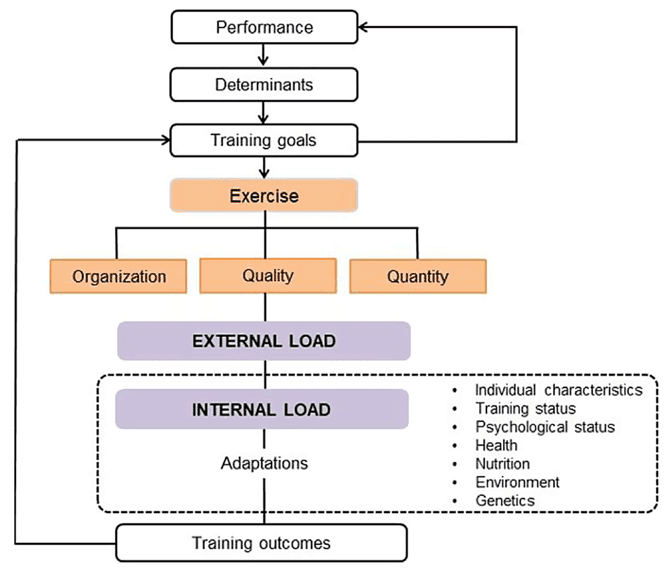Monitoring the training process in team sports
From description to prescription
Recently, one of our team members, Arne Jaspers, was invited to present at the 2nd International Football Congress 2019 of Atlético Nacional in Medellin, Colombia. During his talk, Arne outlined the process from descriptive to prescriptive data monitoring in team sports, focusing on the use of data to support decision-making in the training process.
The aim of monitoring is to enhance competition readiness and reduce the risk of injury and illness1. In first instance, data monitoring can assist in describing and evaluating the training program to see if your training goals are accomplished (description). However, to increase the impact of data monitoring, it is important to develop monitoring strategies to plan and adjust future training programs on a daily basis, considering the individual player requirements (prescription). In this blog post, we will focus on the first step: descriptive analytics.

A road map to monitor and optimise the training process (adapted from the Gartner Analytic Value Escalator)
To describe what happened during the training process, a systematic data collection is of utmost importance. A recent blog of Jo Clubb, applied sport scientist at the Buffalo Bills NFL team in the USA, provided some helpful tips to build your own database.
Depending on the (wo)manpower in your staff, a monitoring platform such as Topsportslab may assist in automating and integrating the data collection to make this process more efficient (e.g., easier, faster, less (human) mistakes, etc.).
The data collection is ideally based on a well-structured theoretical framework, such as the training process model of Impellizzeri and colleagues that was recently renewed in the International Journal of Sports Physiology and Performance.
First, it is important to understand the performance determinants of the sport (endurance, strength, speed, recovery, etc.). Based on these determinants, training goals and corresponding training programs can be planned and subsequently monitored.
Each training consists of a certain external load, which is defined as the physical work prescribed in the training program. For field sessions, Global Navigation Satellite System (GNSS) and accelerometer technology, integrated in player tracking devices such as Catapult, STATSports, Wimu and JOHAN Sports could be used to describe the locomotor and non-locomotor activities such as running, sprinting, accelerating, and jumping.
For strength sessions, metrics such as the number of repetitions and the resistance lift could be used.
The external load results in an internal load that may vary between or within players because of player characteristics (training status, age, posture, etc.) and environmental factors (weather, surface, opponents). Therefore, the external load must always be analysed in relation to the individual players’ internal load which can be measured via heart rate or the rating of perceived exertion (RPE).
Finally, the internal load determines the training outcome that needs to be evaluated in relation to the training goals to assess the training program effectiveness. Examples of training outcome indicators are (sub)maximal running tests, jump tests, well-being questionnaires, injuries, and pain reports.

Theoretical framework of the training process (Impellizzeri, Marcora & Coutts, 2019) (*2)
To summarize, the first step in the monitoring process is to describe the performance determinants and the corresponding training program. For this, a wealth of indicators can be collected (systematically), that can be structured into external and internal load, player and environmental factors and the training outcome. However, by just describing these indicators and only looking to what happened, the impact of monitoring and its value may be rather low. Therefore, additional steps need to be followed to increase the value of monitoring for the training process and success of your team/athlete(s).
Interested in load monitoring?
Want to see how our platform can help you monitor the training process in team sports?
Care to keep updated?
Subscribe to our newsletter.
You'll get updates about our recent blog posts and platform updates.
References
(*1) Samuel Ryan, Thomas Kempton, Franco M Impellizzeri and Aaron J Coutts (2019): Training monitoring in professional Australian football: theoretical basis and recommendations for coaches and scientists, Science and Medicine in Football
(*2) Franco M. Impellizzeri, Samuele M. Marcora and Aaron J. Coutts (2019): Internal and external training load: 15 years on, International Journal of Sports Physiology and Performance.